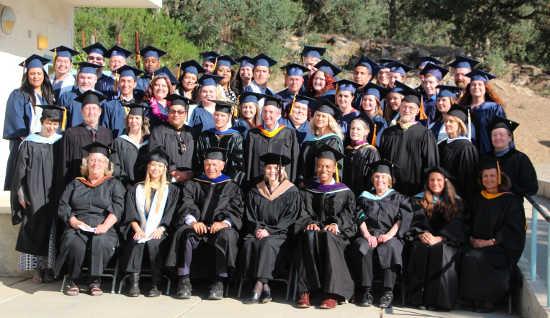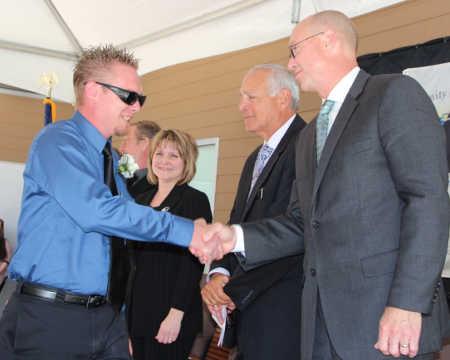CLEARLAKE, Calif. – The Clearlake Planning Commission this week held a preliminary discussion on a teenager's proposal to introduce a graffiti wall into the city in order to reduce vandalism and tagging.
The commission took about a half-hour to work through its brief agenda on Tuesday evening. Commissioner Dirk Slooten was absent.
City Manager Joan Phillipe presented the graffiti wall item to the commission.
She said the idea originally was made to the council, which referred it to the planning commission – which also sits jointly as the Clearlake Parks and Recreation Committee – to make a proposal back to the council.
“You may have noticed that there has been a significant amount of graffiti recently popping up around the city,” she said.
Councilman Bruno Sabatier was contacted by a 17-year-old Oscar Frias, who suggested a local graffiti wall.
Frias was not able to attend the Tuesday meeting, but Sabatier was on hand to show the commission a brief video presentation that he assisted Frias with preparing.
Phillipe said that Frias' proposal is to allow an art graffiti wall in order to try to reduce the types of graffiti appearing around town.
She said there are other communities throughout the nation that have done something similar and are seeing some success.
Phillipe said she discussed the proposal with Clearlake Police Chief Craig Clausen, who indicated that his agency is interested in having input on the proposal if a recommendation is made to the council so that it doesn't create any additional problems.
In his video, Frias said such graffiti walls have reduced gang graffiti in other communities, and he showed pictures of graffiti walls in Denver and Sacramento.
He said the projects bring people together, and show that parks have culture and are open to a variety of people. Such walls also are constantly evolving and an infinite source of expression, he said.
Possible locations Frias suggested are the skatepark and basketball courts in Austin Park and the youth center at Redbud Park.
Due to technical difficulties, the commission had to huddle around Phillipe's laptop to watch the video, which is shown in the meeting video above.
Sabatier said that guidelines for the walls include not allowing three things – profanity, gang signs and nudity.
Commission Vice Chair Cheryl Hutchinson said a graffiti wall in Santa Rosa had stopped graffiti tagging on the underside of an overpass. She also cited successes in other communities.
If such a wall will bring the community together and give children an artistic venue – rather than defacing businesses and other facilities – “I'm all for it,” Hutchinson said.
Commissioner Bill Perkins asked how to keep taggers from painting other places than they are now, especially if – as in some cases with other graffiti walls – the art isn't painted over but becomes permanent.
Phillipe said that, as she understands it, when parameters are set forth for such walls, it develops respect among young people, who then gravitate to the walls.
If the commission recommends to the council that it should allow and support a graffiti wall, Phillipe said the parameters would have to be made well known and the site monitored.
“Who on your staff has time to monitor it?” asked Chair Carl Webb.
Replied Phillipe, “That's a very good question.”
She said it would have to fall to a current city parks staffer, suggesting it could be one of the city's temporary employees. “It wouldn't necessarily be every day.”
Phillipe also suggested that it could be managed under the adopt-a-park program the commission recently recommended to the council. In that case, someone who wished to take on the wall would work with city staff to monitor it.
Webb said he had concerns about a graffiti wall at Austin Park, since it's frequented by families, and he raised concerns about the need for constant monitoring.
“Once you have them running around with spray paint and things, how do you direct it to the murals or the spots where you want them to have it, not just tagging everything along the way?” Perkins asked, adding it would be interesting to see how other areas are handling that concern.
Phillipe suggested that perhaps it would be of benefit for the city to contact other jurisdictions that have the walls and find out how they have promoted them and enforced the rules, and if they have support within the graffiti artist communities to help monitor the walls.
She said staff could then bring the topic back to the next commission meeting for discussion of specific examples from those other areas.
Webb said he recently traveled in Europe. “Their graffiti problem over there is a lot worse than ours,” he said, noting that there is graffiti all over, including on historic buildings.
He said a graffiti wall in Clearlake won't work without severe monitoring and he's concerned about city staff having to do it. “It really is going to be a very serious problem.”
Hutchinson asked if Frias could come to next meeting. He had reportedly been unable to make it Tuesday.
Phillipe said Slooten also sent in several photos of other walls in the Sacramento area that were fairly nice, and she said she can share those with the rest of the commission.
Hutchinson asked if it would be possible to have city businesses sign up to have graffiti artists paint the sides of their buildings to inhibit or prohibit future tagging, suggesting that they could “muralize” areas.
“Certainly it's possible, whether or not it's going to work is the question,” said Webb.
“How do you control it?” Perkins asked.
Webb also asked what would be considered offensive, adding the issue could become a quagmire.
Phillipe said those may be concerns other jurisdictions have been able to deal with, and she would get more information for the commission.
Also on the Tuesday agenda, the commission unanimously approved Robert Matthews' request for a variance to reduce the 20-foot frontyard setback to 16 feet at 16002 39th Ave.
The setback reduction is meant to accommodate the installation of a 1,344-square-foot manufactured home – measuring 24 by 56 feet – as well as a 400-square-foot garage on the 50-foot by 100-foot corner parcel, staff said.
In 2003 a single-wide mobile home was removed from the property, which has been vacant for the last 12 years, according to staff.
With no significant obstructions or negative impacts, city staff recommended the commission approve the variance with conditions, including submitting building plans and receiving a permit. A power pole in the middle of the property also will need to be replaced.
The commission approved the variance 4-0.
City Manager Joan Phillipe also gave the commission a brief status update on properties formerly held by the city's redevelopment agency, plans to carry out the Lakeshore Drive Downtown Corridor Plan and other matters that also will soon be appearing before the city council.
Email Elizabeth Larson at This email address is being protected from spambots. You need JavaScript enabled to view it. . Follow her on Twitter, @ERLarson, or Lake County News, @LakeCoNews.













